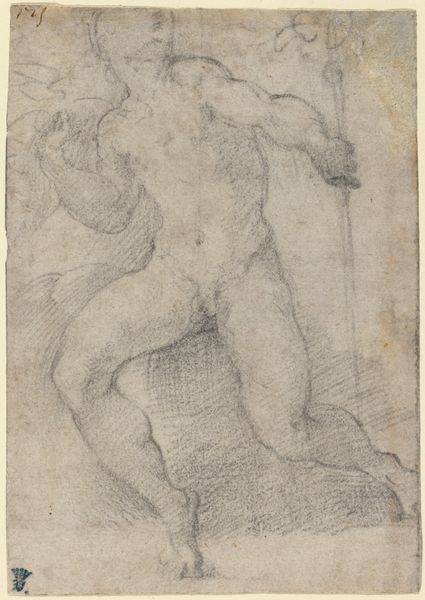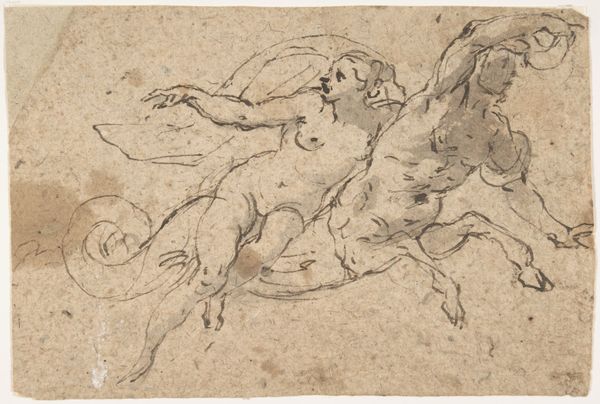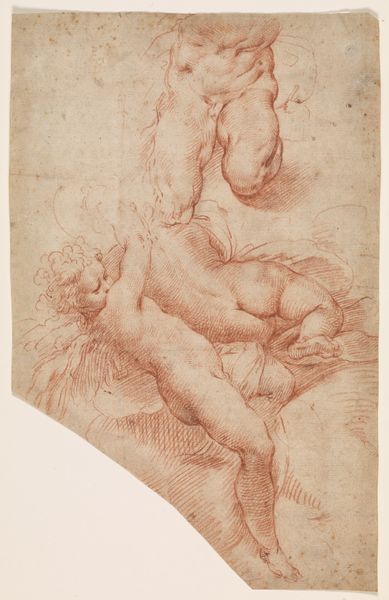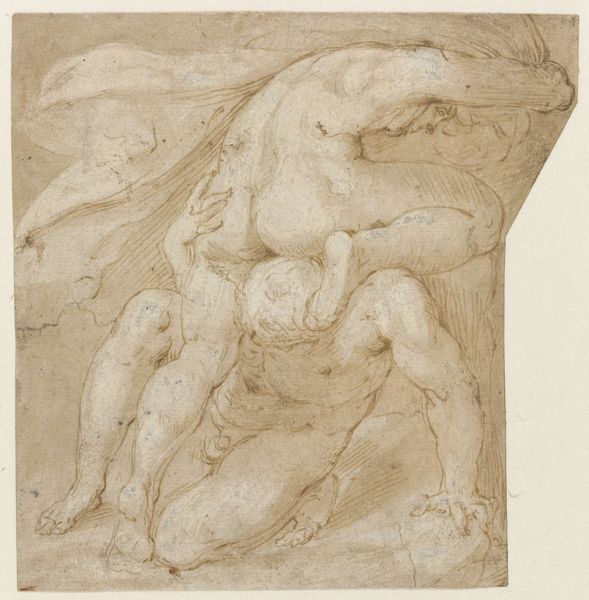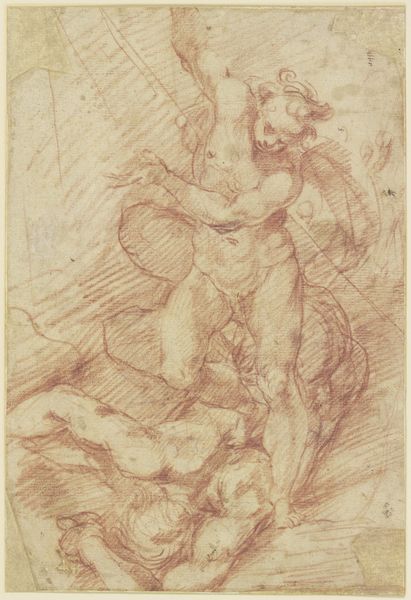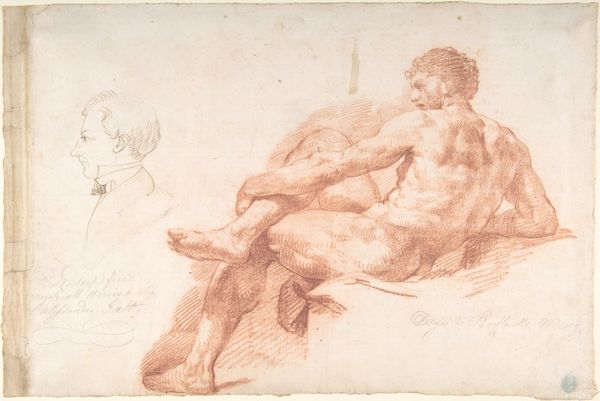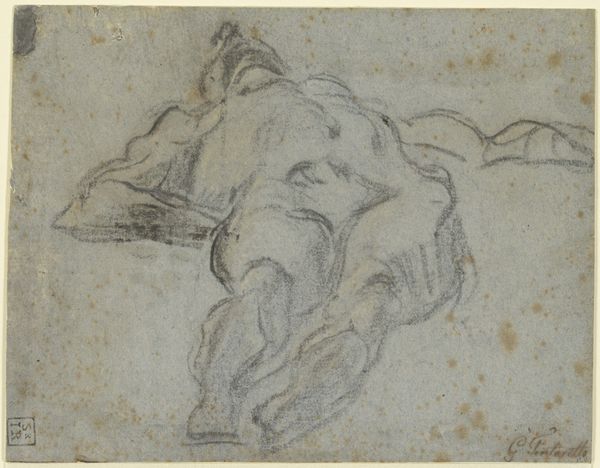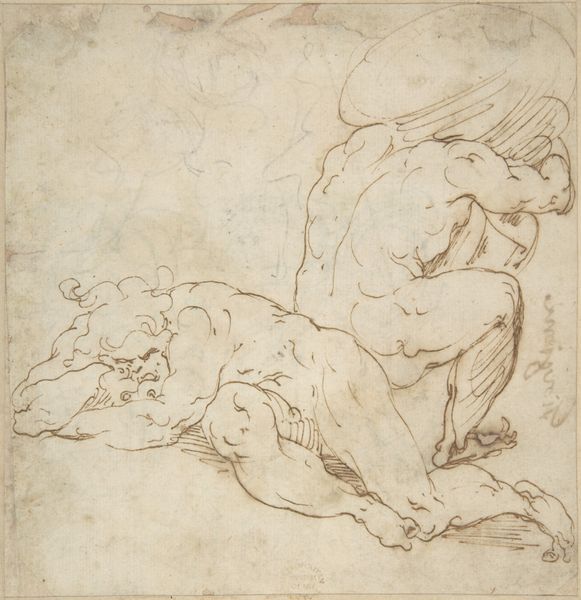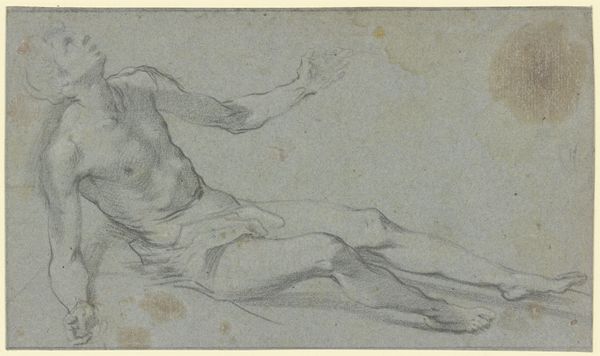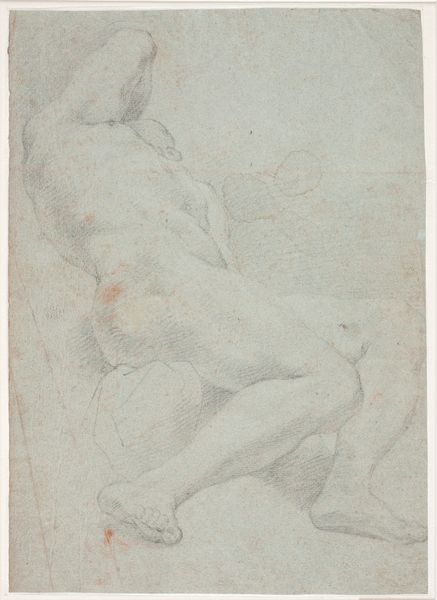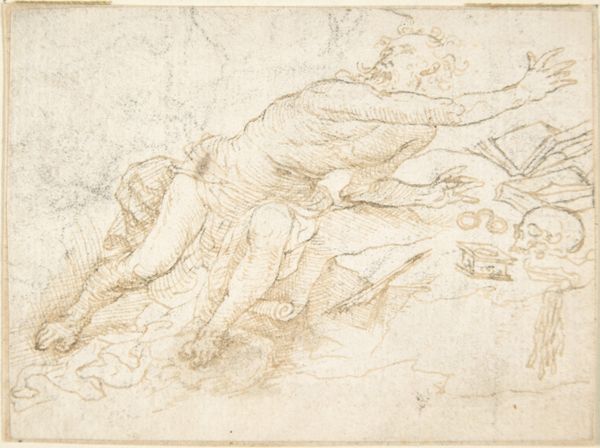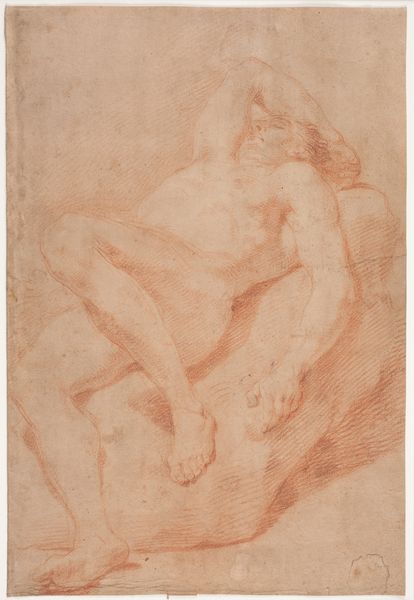
A River God (recto); Sketches for the Vestibule of the Laurenziana, Florence (verso) 1511 - 1592
0:00
0:00
drawing, print, pencil, charcoal
#
drawing
# print
#
pencil sketch
#
charcoal drawing
#
figuration
#
pencil drawing
#
pencil
#
charcoal
#
italian-renaissance
#
male-nude
Dimensions: 7-1/4 x 9-1/2 in. (18.4 x 24.1 cm)
Copyright: Public Domain
Curator: Before us is Bartolomeo Ammanati’s double-sided drawing, likely dating from the mid-16th century. One side presents a study of a “River God,” and the other includes sketches related to the Vestibule of the Laurenziana Library in Florence. It’s rendered in pencil and charcoal. Editor: The most striking thing is the figure's weightiness and grounded nature. The cross-hatching seems almost to anchor him to the page, emphasizing his mass. Curator: Absolutely. Ammanati, heavily influenced by Michelangelo, imbued his figures with a muscularity and dynamism meant to evoke strength, both physical and civic. Consider, he was working during a time of intense political and artistic competition among Italian city-states. Public art, even preparatory sketches like these, served as demonstrations of power and cultural sophistication. Editor: The hatching accentuates volume, for sure, but I'm intrigued by the rather… unfinished quality. The River God is relatively complete, but the limbs sketched on the right side lack the same definition. Curator: Those fragmented limbs provide an insight into the creative process, right? Ammanati was not only a sculptor but also an architect; you know, that library vestibule commission? These drawings show the kind of planning that went into realizing grand, propagandistic artworks, like, say, fountains that reinforced a ruler’s control of precious resources, water in this case. Editor: I can appreciate that argument. But stepping back, the power in that pose… It's something undeniably present in the raw linework, an unpolished, very dynamic expression of force, far beyond pure, propagandistic intentions. Curator: But does the monumentality overshadow some kind of sensitivity, in the figure’s leaning posture perhaps? Editor: I do find sensitivity in the contour of the figure’s stomach, that little roll! In his imperfection the river god becomes, actually, all the more, vital. Curator: So, the drawing as a vital record of its time, and a lasting study in classical idealization, or an exploration in shape. Editor: A conversation about forms still relevant to us today!
Comments
No comments
Be the first to comment and join the conversation on the ultimate creative platform.
